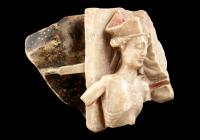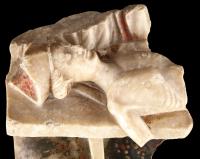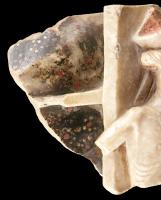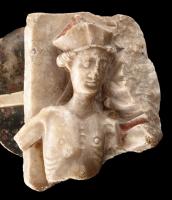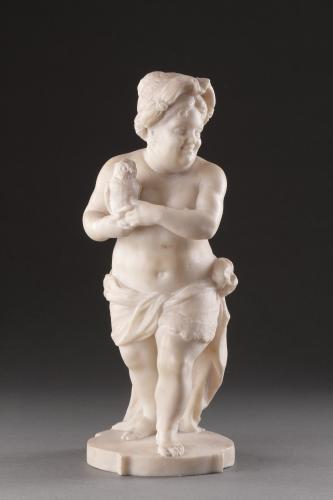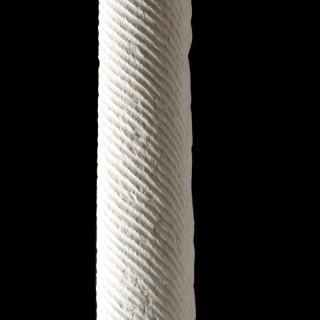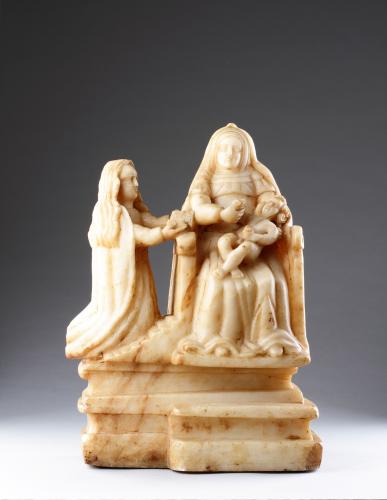
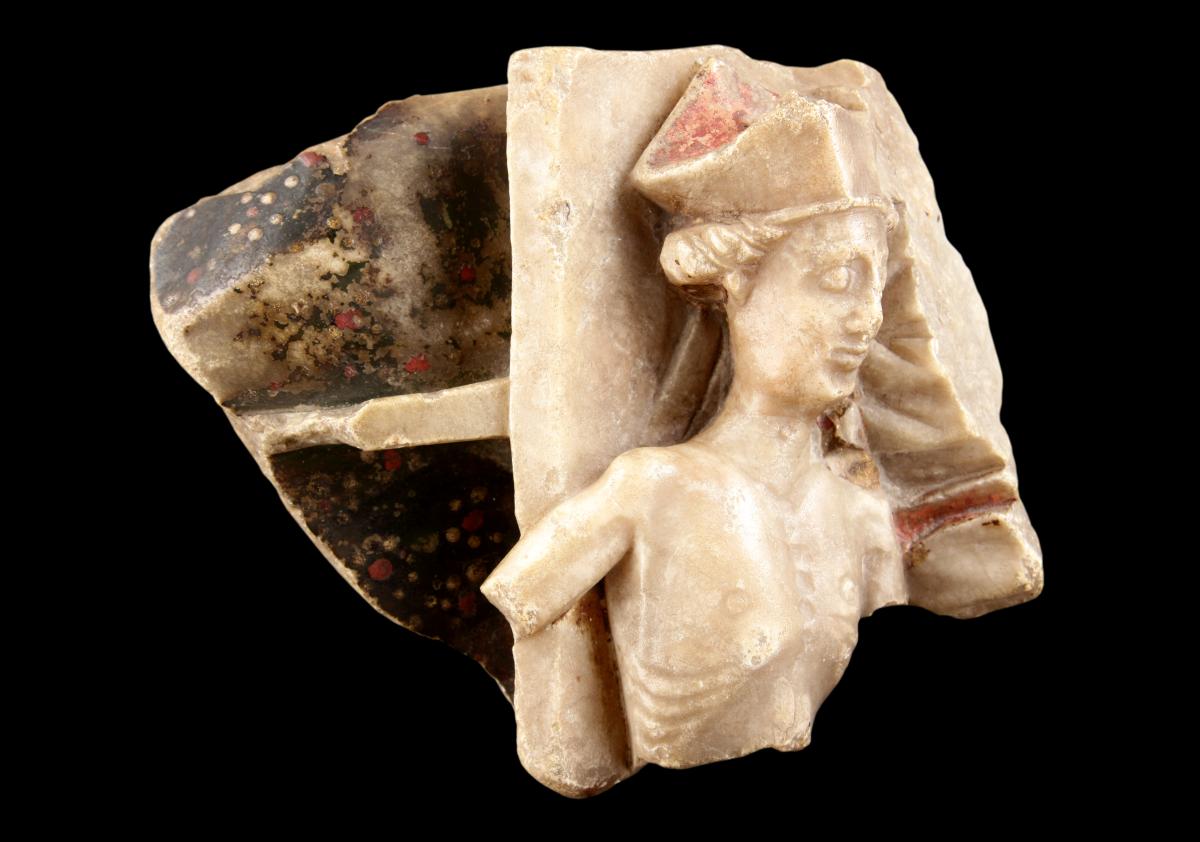
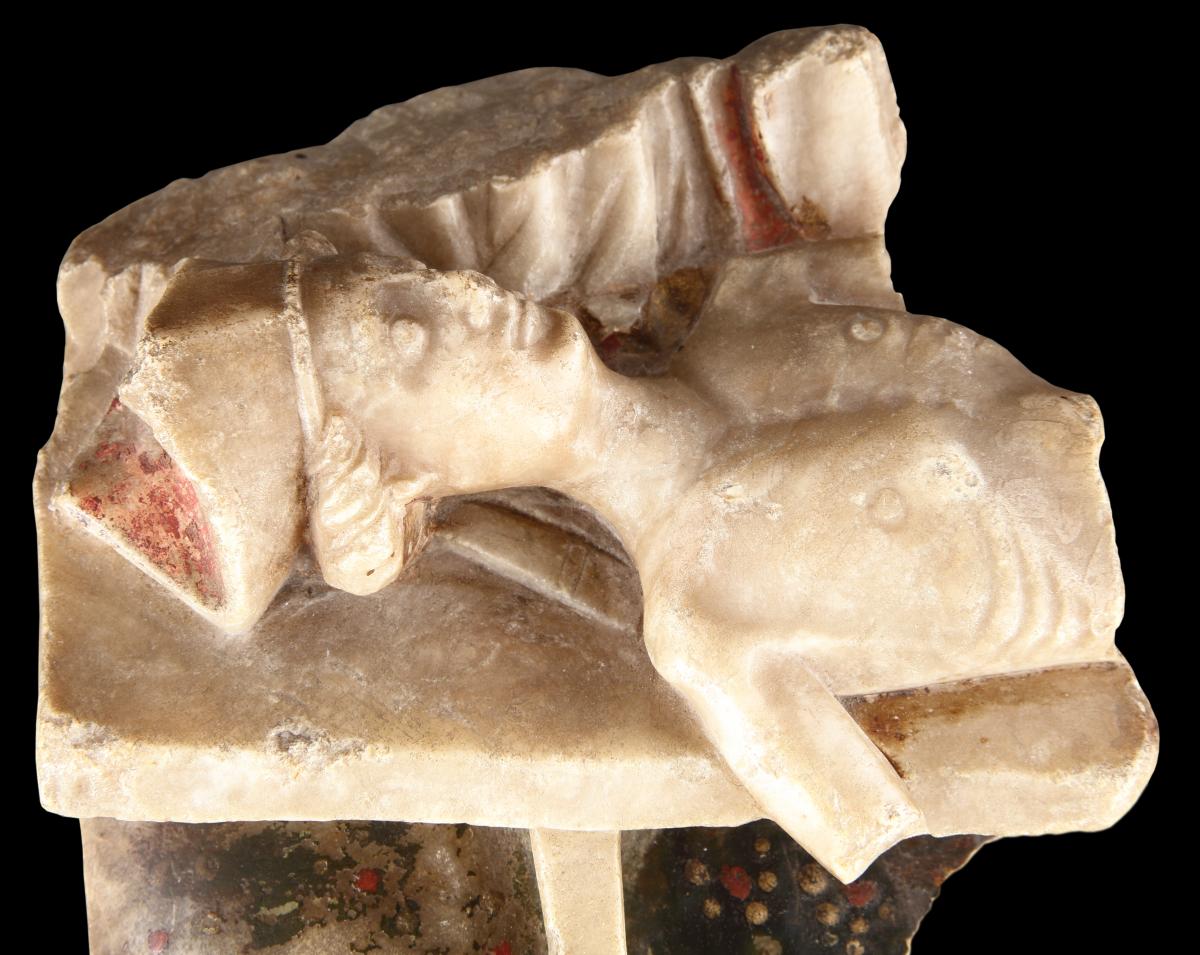
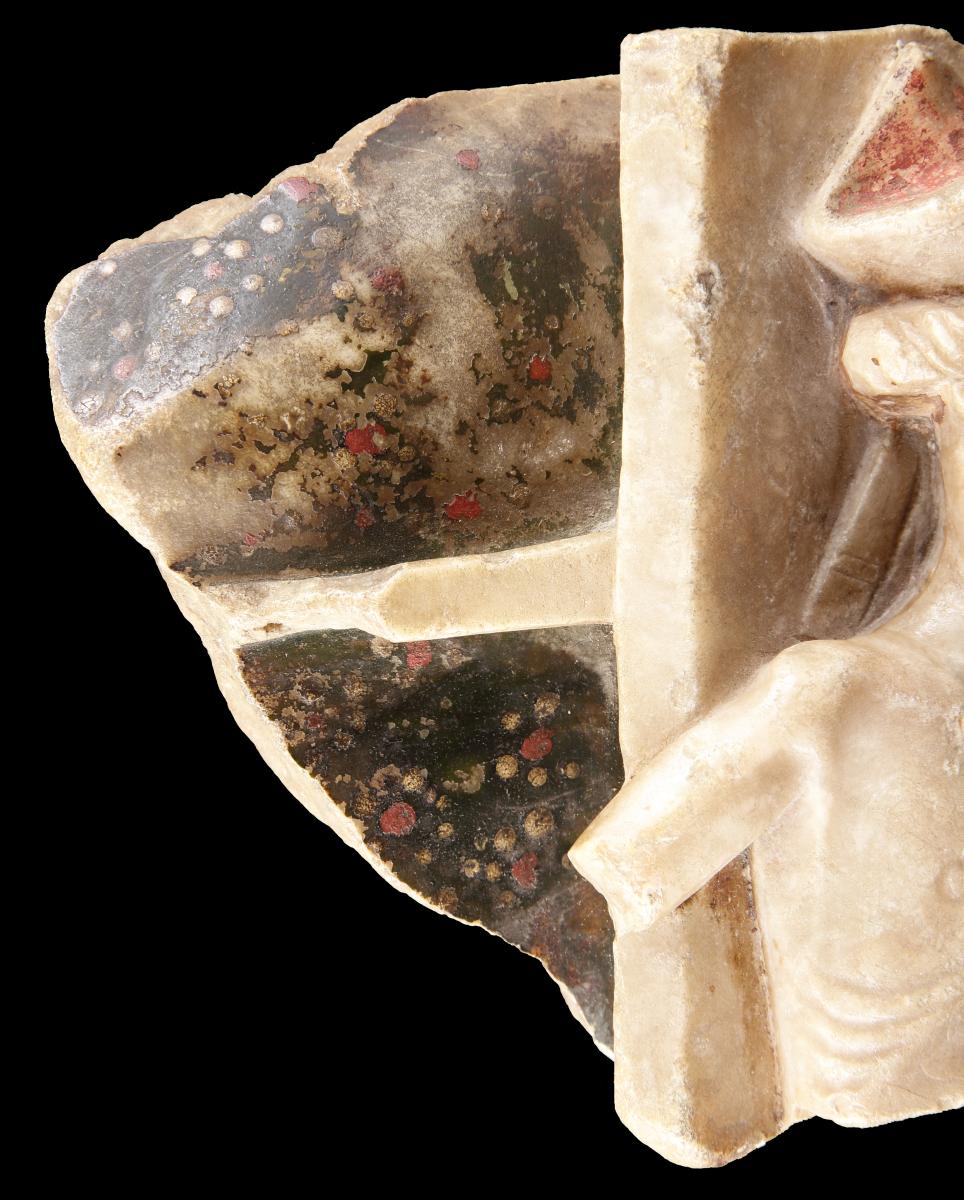
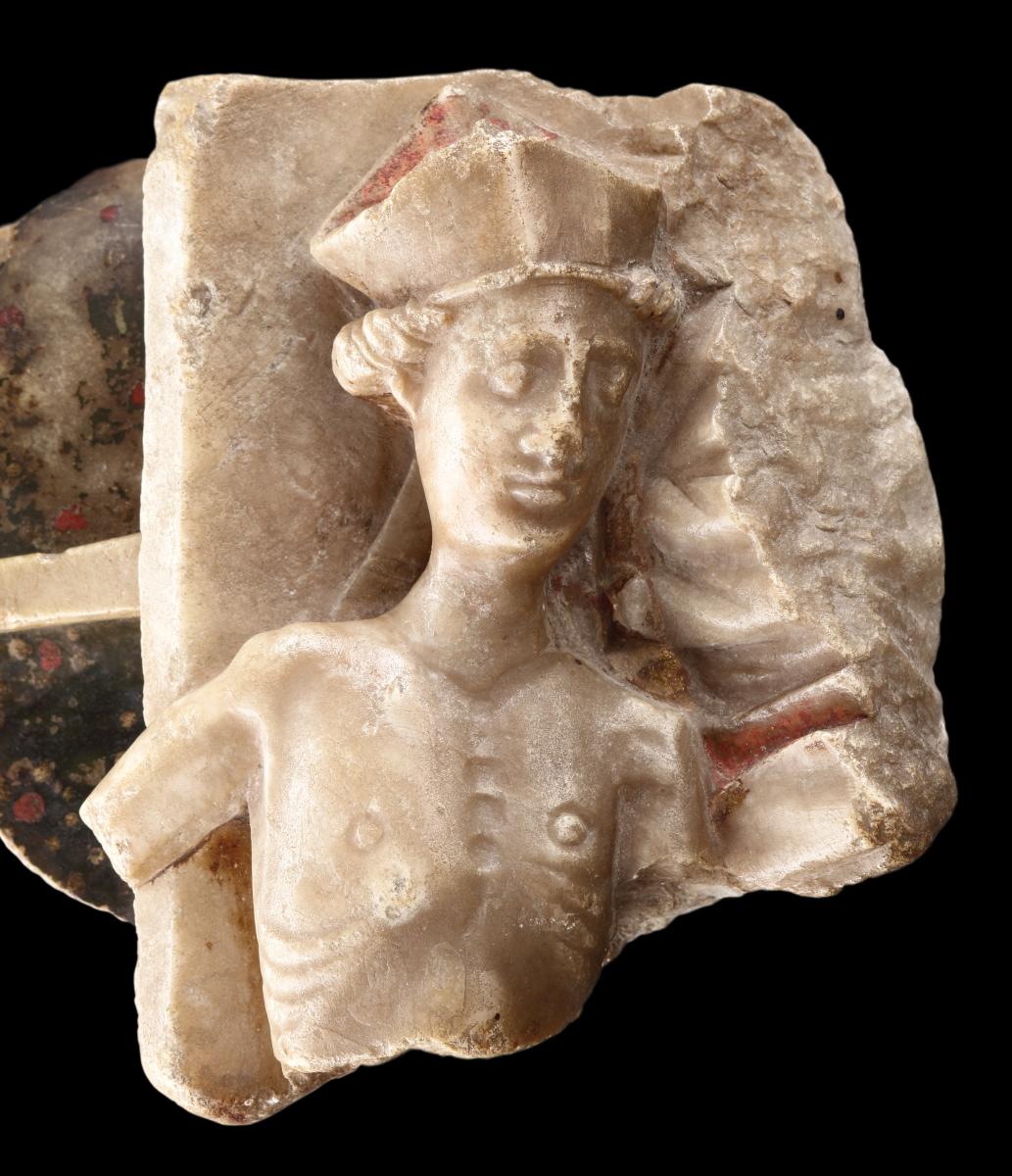
Price on application
This object is eligible for a Certificate of BADA Provenance
The BADA Standard
- Since 1918, BADA has been the leading association for the antiques and fine art trade
- Members are elected for their knowledge, integrity and quality of stock
- Our clients are protected by BADA’s code of conduct
- Our dealers’ membership is reviewed and renewed annually
- Bada.org is a non-profit site: clients deal directly with members and they pay no hidden fees
An English Nottingham Alabaster of St Erasmus.
Alabaster, polychrome.
England.
15th Century.
PROVENANCE:
Ex Private collection Jonathan Horne.
Thence by descent.
From the late 1300s until the Reformation alabaster carving was a major artistic activity and industry in the English Midlands in an area centred on Nottingham. Small in scale, altarpieces and panels were produced for the home market as well as for export.
Alabaster is hydrous calcium sulphate, also known as gypsum, and was extracted in the Middle Ages from a comparatively small area of South Derbyshire and the adjoining corner of Staffordshire. Nottingham alabaster sculptures have a distinctive almost ‘English’ style. Depicting religious subjects they were usually painted and gilded, although areas of unpainted alabaster were almost always left to contrast with the colourful painted details. The carving of images of saints expanded during the 15th century reflecting the developing cult of saints.
At the time of the Reformation many of the carvings were destroyed or hidden, but the survival of fragments and those in the churches and cathedrals of France are proof of their popularity in medieval Europe. Today there are more English medieval alabaster carvings in Normandy than anywhere else.
St Erasmus, also known as St Elmo (died circa 303 AD) was a Christian St and martyr venerated as the patron saint of Sailors. He was also one of the fourteen Holy Helpers. Bishop of Formia, Italy, during the persecution of Christians under the emperors Diocletian (284 - 305) and Maximian Hercules (286 - 305), he went into hiding on Mount Libanus for seven years. However, after an angel appeared before him, counselling him, he returned to his city.
Dimensions
14cm high, 12cm wide, 5.5cm deep - 5½ ins high, 4¾ ins wide, 2¼ ins deepThe BADA Standard
- Since 1918, BADA has been the leading association for the antiques and fine art trade
- Members are elected for their knowledge, integrity and quality of stock
- Our clients are protected by BADA’s code of conduct
- Our dealers’ membership is reviewed and renewed annually
- Bada.org is a non-profit site: clients deal directly with members and they pay no hidden fees


